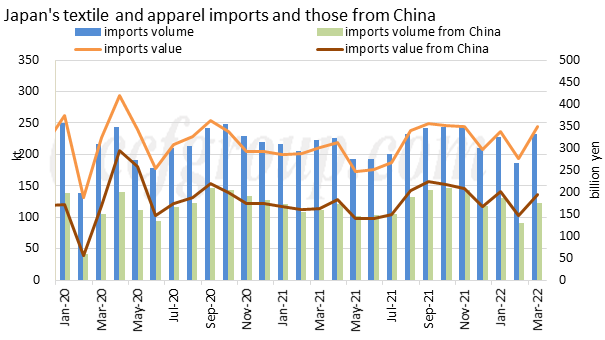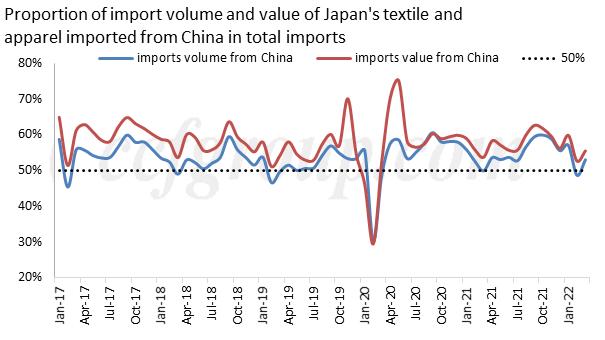Did Japanese yen' s depreciation affect Japan' s textile and apparel imports?
Japanese yen has depreciated sharply since the conflict between Russia and Ukraine, falling by more than 13% in less than two months. US dollar against the yen has broken through 130, the lowest since 2002.
The sharp depreciation of the yen is mainly due to three reasons. Firstly, the United States raised interest rates. Since March, the Fed has begun the cycle of raising interest rates, the US dollar has strengthened sharply, and interest-rate differential between Japan and the US has widened, causing the market to sell yen for dollars and a substantial outflow of capital out of Japan. The second reason is that Japan adheres to a loose monetary policy. Japan's economy has been stagnant over the past 30 years, with an average annual real GDP growth rate of only 0.97%. Since the COVID-19 pandemic in 2020, there has been a serious negative growth. The economy has been repaired by loose monetary policy and fiscal stimulus, which makes the Japanese government too dependent on low interest rate monetary policy. Thirdly, high commodity prices and global economy downturn have led to a rise in the price of imported resources, while demand for exports has shrunk, and Japan has been running a trade deficit for months. This has led to a decline in global capital confidence in the Japanese economy and capital outflows.
![C])H4RM4{3GYD~1B`A3W_FX.png C])H4RM4{3GYD~1B`A3W_FX.png](https://pic.ccf.com.cn/2022/05/20220511024340439.png)
Because Japan is an export-oriented country, the depreciation of the yen is conducive to the export of Japanese products, but the relative price of imports is more expensive.

The latest data showed that the volume and value of Japan’s textile and apparel imports in Feb slipped month-on-month and year-on-year due to seasonal reasons. During the Chinese Lunar New Year in February, logistics and transportation decreased greatly. The seasonality of textile and apparel consumption in Japan was similar to that in China. The main sales discount seasons in Japan were in November and December, including Black Friday and Christmas. Japanese New year is in January, and there are usually a few days off. After the peak consumption season in the fourth quarter, January is often the time for Japanese merchants to replenish their stocks.

Japan’s textile and apparel imports in Feb totaled 277.41billion yen, down 3.4% from the same period last year, of which imports from China were 146billion yen, down 8.8% from the same period last year. Japan’s apparel imports totaled 197.3billion yen, down 6.2% from the same period last year, of which imports from China were 104billion yen, down 10.6% from the same period last year. Japan’s textile and apparel imports in Mar totaled 349.36billion yen, up 15.9% from the same period last year and 25.9% month-on-month. Japan’s apparel imports totaled 247.7billion yen, up 15.2% and 25.6% year-on-year and month-on-month, of which imports from China were 193.93billion yen, up 19.8% and 32.8% year-on-year and month-on-month.
- Top keywords
- Cotton Price
- Cotton Futures Price
- Cotton Futures
- CZCE
- PTA Futures Price
- Chemical Fiber
- Polyester Prices
- Wool price
- PTA Futures
- Shengze Silk
- China
- Yarn Price
- price
- China Textile City
- Fibre Price
- Benzene Price
- Cotton
- Index
- Cotton Index
- PTA
- fabric price
- NYMEX
- Top 10
- textile industry
- Spot Cotton
- Cotton Yarn
- Polyester Price
- Futures
- PTA Price
- cotton yarn price

